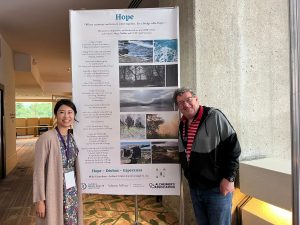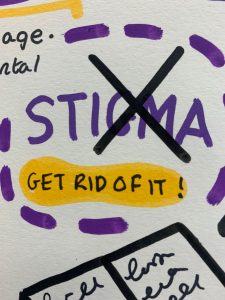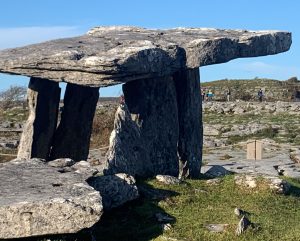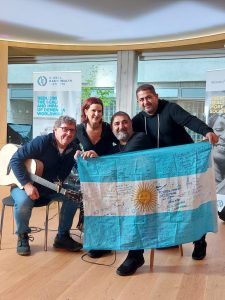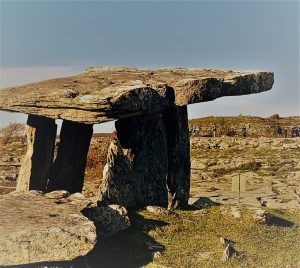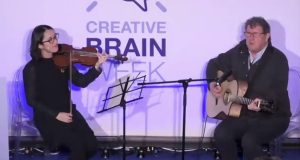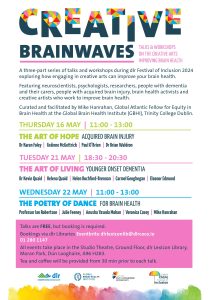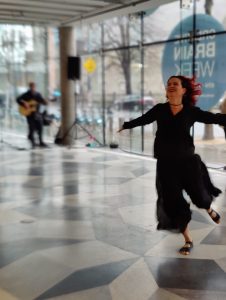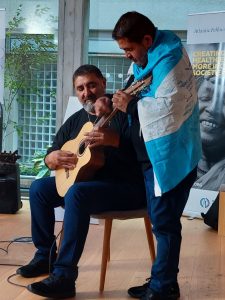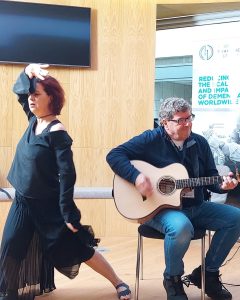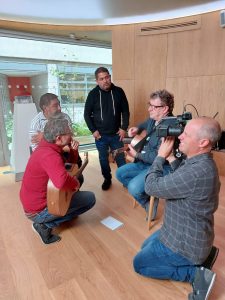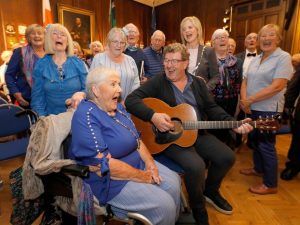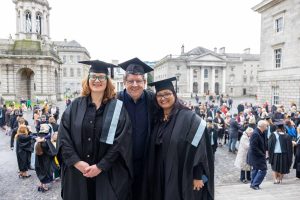Creative Arts and Wellbeing
The Sound of Dementia
Mike Hanrahan 2024
The first sound we create is a heartbeat. The first sound we hear is the music of a mother’s
breath. Her voice is the comfort melody that sends us to sleep. As we navigate our life path,
we develop a surround sound of melodies and words that stir our emotions. Each moment
sings its own tune.
Science tells us that we all conduct a kind of regular spring clean of our brains, storing
episodic long term memories away in the safety of the Neocortex, which is — if I was paying
attention in class — the vast outer layer of the brain. It has lots of folds with grooves and
ridges called Sulci and Gyri. You might say we all return to the fold, as it were, as we get
older, but this is particularly the case when dementia is in the mix. The Neocortex becomes
our memory haven. Music, poetry, and the arts are the gateway that takes us there.
I’ve spent the last year with The Global Brain Health Institute at Trinity College Dublin
working out how I, as a creative artist from Bohemia, can learn from the world of science and
Academia, to develop a better understanding of our brain health. We’ve been exploring
meaningful ways of collaboration between Science and The Arts in Dementia care. As part
of a cohort of 14 in a room in Trinity, and another cohort at a university/teaching hospital
UCSF , in San Francisco, we all worked together connecting online and in person: artists,
neurologists, food economists, dancers, a film director, clinicians , scientific researchers and
singer songwriter me.
We’re all, in our own way, creative artists, inspiring each other to be more inquisitive, more
understanding, and more tolerant. We have in common the goal of breaking down the stigma
associated with dementia and poor brain health.
One day I asked my friend Valentine, an eminent Neurologist from Nigeria who sat across
from my desk, what is the sound of Dementia. “Interesting question,” was his reply. “We
study it, we talk about it, we write about it, we photograph it. We follow its development; we
treat it with medication and care, but no one asked me that question before Mike.”
So, what do you think Dementia sounds like? And why should we listen to it?
It must be a quiet gentle sound, I think, one that responds easily to our changing emotions.
Yes of course, it sometimes loses control, and it may sound angry, sad, or confused. And
sometimes, as my friend Kevin explained about his Lewy Body Dementia nightmares,
“sometimes it’s absolute hell Mike.” Yes, I wonder what that hell sounds like too. Is it a
flattened A minor ninth chord with a diminished fifth over an XYZ bass….? I don’t know, and I
have no idea what that chord would sound like either. Although I’d like to figure it out.
I thought about this some more, and eventually composed a base line of melody called The
Sound of Dementia. It’s not, as you might suspect, anything like The Sound of Silence. That
song was about the inability of people to communicate with each other. But for me, the
Sound of Dementia is all about communication. Why, you may ask, what purpose will this
sound achieve? I don’t know for sure, but I do know that voices in harmony achieve their
best when supporting each other.
My band of Scientists and Creative artists will soon arrive in Dublin from The Congo,
Scotland, Nigeria, The Americas, and Nepal for a gathering at Trinity College to celebrate
Creative Brain Week. We will turn up the amps in the Neocortex and see where it takes us.
Our shared experience will create a shared sound to stir the emotions. We’ll raise our voices
in unison to help global efforts to address the exclusion of people with dementia from living
their fullest lives.
While the heart still beats, we can continue to hear and enjoy its music, and on our mother’s
breath we will remain connected, always.
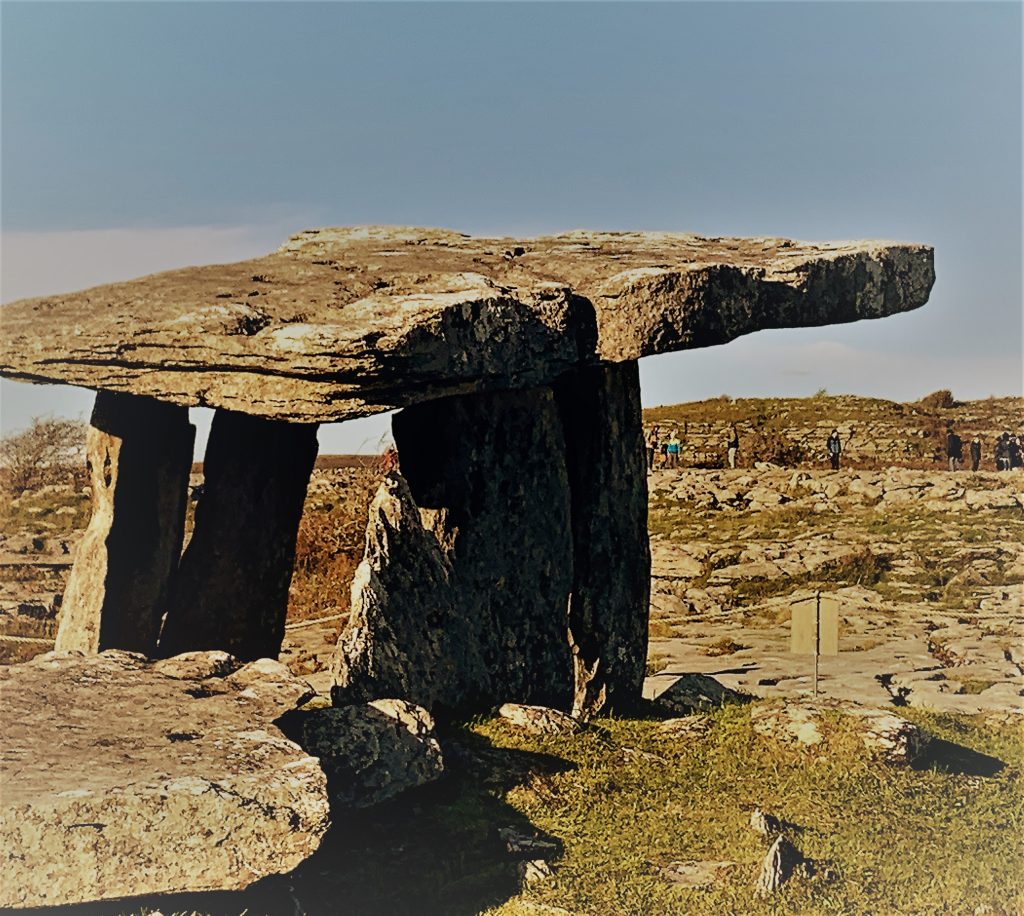
Hope
Mike Hanrahan -Trinity College, Dublin, April 2023
Hope is fragile
a barnacle clinging to existence
in adverse longing of experience
a flaggy shore under salt sea spray
tears flowing from the mist of time
weeping, creeping, seeping,
rising from limestone grey
to nurture bloom the hoary rock rose and the whitethorn flower
Hope be a dawn of Icarus blue,
Chrysalis and Speckled wood,
To dance the petals of youth
flickering
about the he and she of things
he the she and she the he of things
Hope be courage
driftwood churning current and tide
clenching, cascading into a calming pool
of dreaming
to lay neath lichen cloak by whispering oak
with siskin nestled in moss and twig
a sika cry on morning breath
weeping through the hollows,
the understory
in the he and she of things
he the she and she the he of things
Hope be liberty light
The fledging, soaring high
Into a wonder cloud
Of myth and legend Into the he and she of things
Hope be the warmth of meadow green
A daisy dance of passion
A human right of things
A right to be of things
The he and she of things
He the she she the he of things

